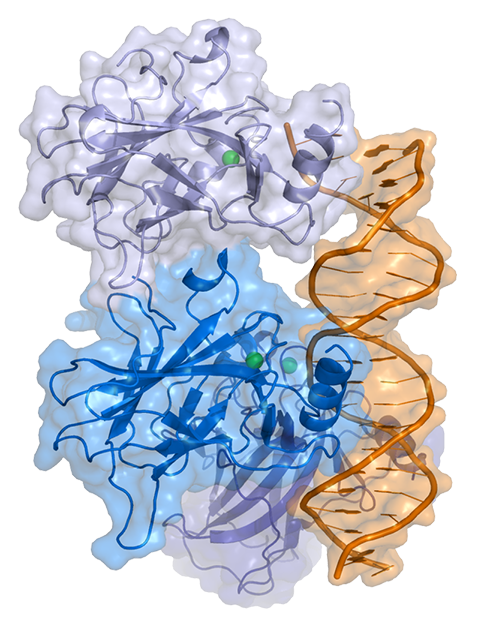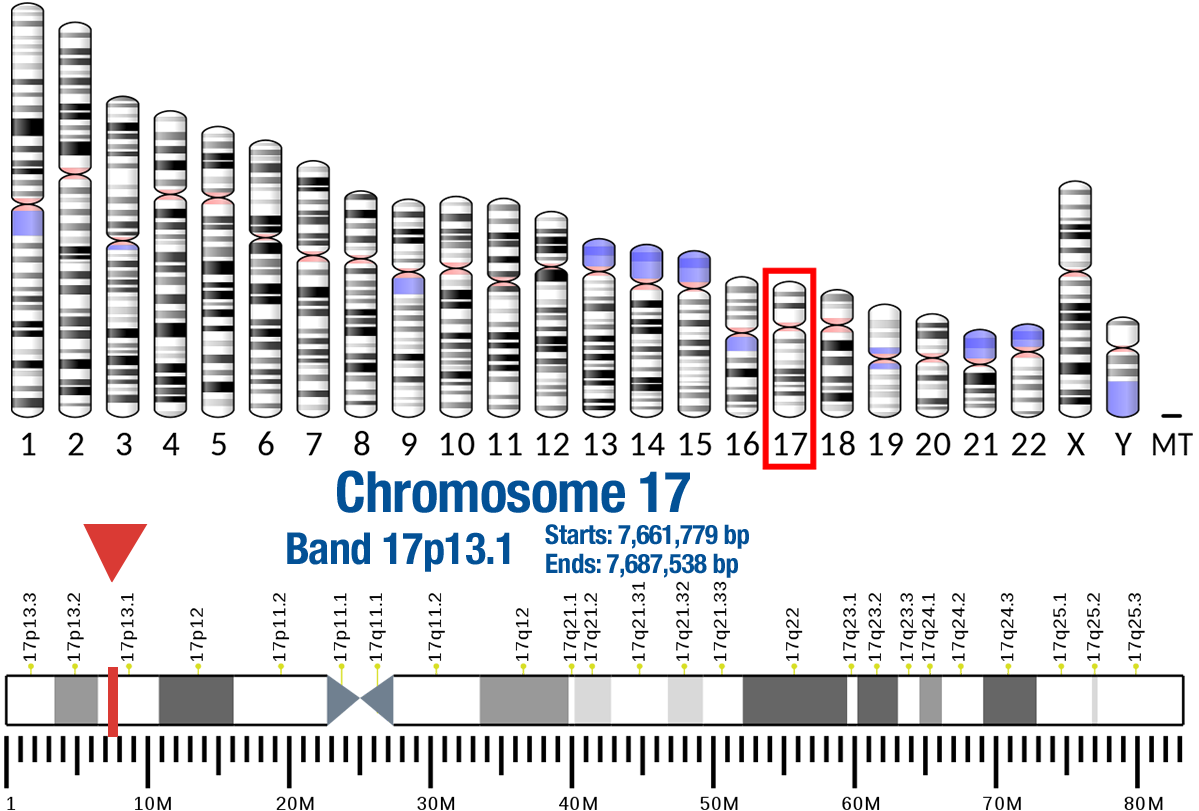
This gene encodes a tumor suppressor protein containing transcriptional activation, DNA binding, and oligomerization domains. The encoded protein responds to diverse cellular stresses to regulate expression of target genes, thereby inducing cell cycle arrest, apoptosis, senescence, DNA repair, or changes in metabolism. Mutations in this gene are associated with a variety of human cancers, including hereditary cancers such as Li-Fraumeni syndrome. Alternative splicing of this gene and the use of alternate promoters result in multiple transcript variants and isoforms. Additional isoforms have also been shown to result from the use of alternate translation initiation codons from identical transcript variants (PMIDs: 12032546, 20937277). [provided by RefSeq, Dec 2016]
Tumor type associations:
- Bladder
- Breast
- Cervical
- Colorectal
- Endometrial
- Esophageal
- Gastric
- Kidney
- Liver
- Lymphoma
- Melanoma
- Ovarian
- Pancreatic
- Prostate
- Enables transcription cis-regulatory region binding
- RNA polymerase II transcription regulatory region sequence-specific DNA binding
- Enables RNA polymerase II cis-regulatory region sequence-specific DNA binding
- Enables DNA-binding transcription factor activity, RNA polymerase II-specific
- Enables cis-regulatory region sequence-specific DNA binding
- Located in chromatin
- Located in nucleus
- Located in nucleoplasm
- Located in replication fork
- Part of transcription regulator complex
- Involved in negative regulation of transcription by RNA polymerase II
- Involved in in utero embryonic development
- Involved in somitogenesis
- Involved in release of cytochrome c from mitochondria
- Involved in hematopoietic progenitor cell differentiation
- Bone marrow failure syndrome 5
- Breast cancer, somatic
- Hepatocellular carcinoma, somatic
- Li-Fraumeni syndrome
- Nasopharyngeal carcinoma, somatic
- Pancreatic cancer, somatic
- Adrenocortical carcinoma, pediatric
- Basal cell carcinoma 7
- Choroid plexus papilloma
- Colorectal cancer
- Glioma susceptibility 1
- Osteosarcoma
TP53 localizations – Subcellular Localization Database

Cartoon representation of a complex between DNA and the protein p53. Thomas Splettstoesser – Based on atomic coordinates of PDB 1TUP, rendered with open source molecular visualization tool PyMol (www.pymol.org).
Gene Location


